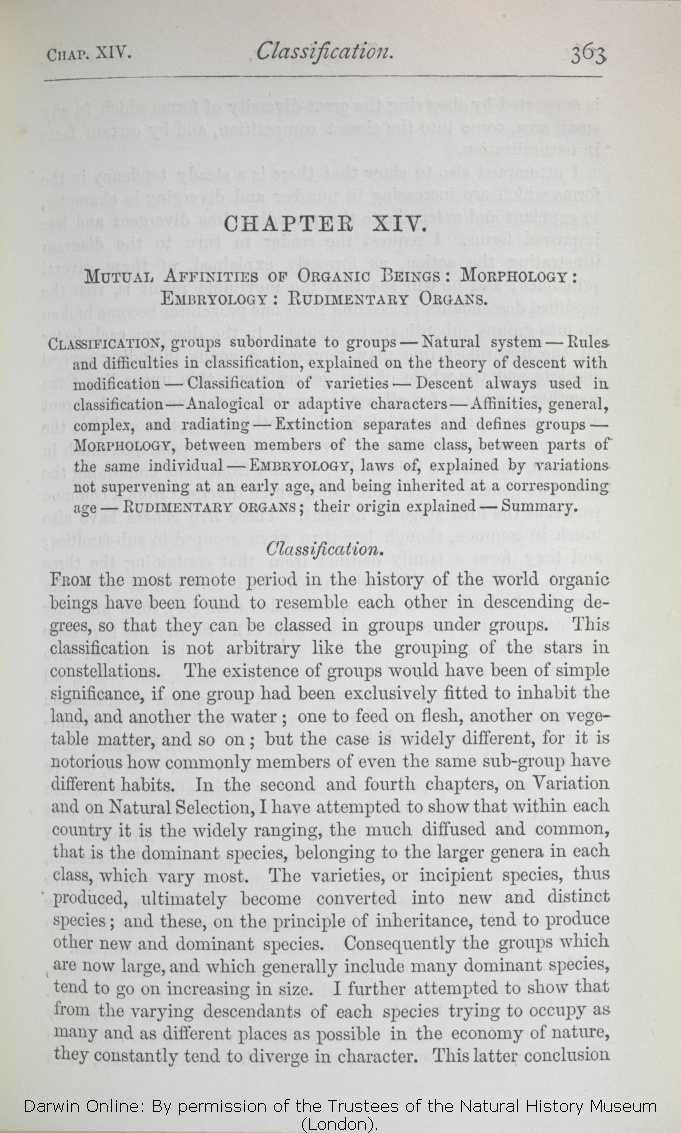CLASSIFICATION, groups subordinate to groups— Natural system— Rules and difficulties in classification, explained on the theory of descent with modification— Classification of varieties— Descent always used in classification— Analogical or adaptive characters— Affinities, general,
complex, | complex, 1866 1869 1872 | | complex 1859 1860 1861 |
|
FROM
the most remote period in the history of the world | the most remote period in the history of the world 1872 |
| the first dawn of life, all 1859 1860 1861 1866 |
| a very remote period in the history of the world 1869 |
| have been found to 1872 |
| are found to 1859 1860 1861 1866 |
| have 1869 |
| resemble 1859 1860 1861 1866 1872 | | resembled 1869 |
| ..... 1869 1872 | | evidently 1859 1860 1861 1866 |
| significance, 1872 | | signification, 1859 1860 1861 1866 1869 |
| different, 1872 | | different 1859 1860 1861 1866 1869 |
| ..... 1872 | | in nature; 1859 1860 1861 1866 1869 |
| the 1861 1866 1869 1872 | | our 1859 1860 |
| within each country it 1861 1866 1869 1872 |
| it 1859 1860 |
| species, 1872 | | species 1859 1860 1861 1866 1869 |
| genera 1861 1866 1869 1872 | | genera, 1859 1860 |
| in each class, which 1861 1866 1869 1872 |
| which 1859 1860 |
| produced, 1861 1866 1869 1872 | | produced 1859 1860 |
| converted 1866 1869 1872 | | converted, 1859 1860 1861 |
| OMIT 1866 1869 1872 |
| as I believe, 1859 1860 1861 |
| ..... 1861 1866 1869 1872 | | indefinitely 1859 1860 |
| they constantly tend 1872 |
| there is a constant tendency in their characters 1859 1860 1861 1866 1869 |
| diverge in character. 1872 |
| diverge. 1859 1860 1861 1866 1869 |
| latter conclusion is 1869 1872 |
| conclusion was 1859 1860 1861 1866 |
|









